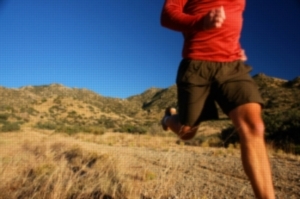Shin Splints – PhysioAdvisor Newsletter
Updated:
PhysioAdvisor Newsletter > Shin Splints
In this month’s newsletter we take a look at one of the most common overuse running injuries affecting the lower leg, Medial Tibial Stress Syndrome or Shin Splints as it is more commonly known. Below are our Top 5 Treatment & Injury Prevention Tips as well as the most commonly recommended products to treat this condition.

What is Shin Splints?
Shin splints is the common name given to the condition Medial Tibial Stress Syndrome. It presents as pain in the lower and inner (medial) aspect of the lower leg bone (tibia) 3 to 12 centimeters above the inner aspect of the ankle (medial malleolus). Typically it is tender to touch the bone along the back and inner aspect of the tibia. The muscles and tendons are inflamed as well as the membrane (periosteum) around the bone where the medial lower leg muscles attach. The most frequently involved muscle is the Tibialis Posterior muscle, but the Flexor Digitorum Longus and Flexor Hallucis Longus muscles are also often involved.

Shin Splints is a repetitive stress (overuse) injury which commonly affects athletes involved in running sports, such as athletics, triathlon, marathon running and football. It commonly starts after a sudden increase in training volume (e.g. at the start of pre-season training).
Learn more about Shin Splints.
Our Top 5 Tips for Treating Shin Splints
The following are our Top 5 treatment and injury prevention tips for Shin Splints:
1. Stretch Your Calf Muscles

Excessively tight calf muscles (gastrocnemius and soleus) are common in patients who suffer from shin splints. Stretching these muscles before and after sport helps improve flexibility and reduce the pain and stiffness associated with shin splints.
Learn how to effectively stretch your calf muscles.
2. Deep Tissue Massage

Having the muscles involved in shin splints massaged regularly not only helps improve flexibility of the lower leg and ankle, but is also extremely effective in reducing the pain and stiffness associated with the condition. The muscles which typically benefit from deep tissue massage include:
- Tibialis Posterior
- Flexor Digitorum Longus
- Flexor Hallicus Longus
- Gastrocnemius
- Soleus
- Plantar Fascia
Find a Physio in your local area who can assist with deep tissue massage to these muscles or perform an effective self massage exercise using a foam roller or spikey massage ball (see our lower body foam roller exercises and massage ball exercises).
3. Apply Ice after Sport

Applying ice to the inner aspect of the lower leg following sport or running can help reduce the inflammation and pain associated with shin splints. Ice should generally be applied after activity for 20 minute durations every 2 hours using an ice pack – particularly when there are signs of inflammation (i.e. night-time pain, morning ache/stiffness or pain at rest).
Check out our range of ice packs.
4. Ensure Your Footwear is Appropriate

Ensure your footwear is up-to-date. Running shoes should generally be replaced every 600-1000km to maintain their shock absorbing capacity and functional support. In addition, ensure the shoes you choose are appropriate for your foot type. Athletes with low arches (i.e. “flat feet”) should generally use shoes with greater support. Runners with higher or more rigid arches do not require as heavily supported shoes.
Learn more about Choosing a Shoe, Your Foot Type and whether or not you may need Orthotics.
5. Perform Core Stability & Gluteal Strengthening Exercises

A common issue in patients with shin splints is a lack of core, pelvic stability and gluteal strength. Running with weak gluteals can increase the demand and load on the lower leg muscles. Incorporating gluteal strengthening exercises into your training regime is an important component of rehabilitation for shin splints.
Check out our Gluteal Strengthening Exercises, Core Stability Exercises & Balance Exercises.
More Injury Prevention Tips
For more injury prevention tips for shin splints, such as running technique, managing training load and warming up and cooling down appropriately, take a look at our Running Injuries article.
Featured Products
Comffit Ice Bag

Ease-to-use and practical ice treatment for overuse injuries, such as shin splints.
Ideal for the rehabilitation of calf strains or shin pain.
Pro-Tec Shin Splints Compression Wrap

Provides support to the lower leg, alleviating the soreness associated with shin splints.
Foam Rollers

Foam rollers are an excellent rehabilitation tool used in the treatment of Shin Splints. They can be used to perform effective self massage techniques to muscles and soft tissue (such as the calf), and can help improve spinal flexibility and posture.
Check out our complete range of products in the PhysioAdvisor Shop.
- View the emailed version of PhysioAdvisor Newsletter – Shin Splints.
- Subscribe to the PhysioAdvisor Newsletter.
- Return to the top of Shin Splints Newsletter.
<!–
google_ad_client = “ca-pub-1345712785979141”;
/* Square Recommended for more profit */
google_ad_slot = “4822562268”;
google_ad_width = 300;
google_ad_height = 250;
//–>

Link to this Page
If you would like to link to this article on your website, simply copy the code below and add it to your page:
<a href="https://physioadvisor.com.au/newsletter/shin-splints”>Shin Splints – PhysioAdvisor Newsletter – PhysioAdvisor.com</a><br/>Shin splints is the common name given to the condition Medial Tibial Stress Syndrome. It presents as pain in the lower and inner (medial) aspect of the lower leg bone (tibia) 3 to 12 centimeters above the inner aspect of the ankle (medial malleolus). Typically it is tender to touch the bone along the back and inner aspect of the tibia. The muscles and tendons are inflamed as well as the membrane (periosteum) around the bone where the medial lower leg muscles attach. The most frequently involved muscle is the Tibialis Posterior muscle, but the Flexor Digitorum Longus and Flexor Hallucis Longus muscles are also often involved.
Return to the top of Shin Splints – PhysioAdvisor Newsletter.
